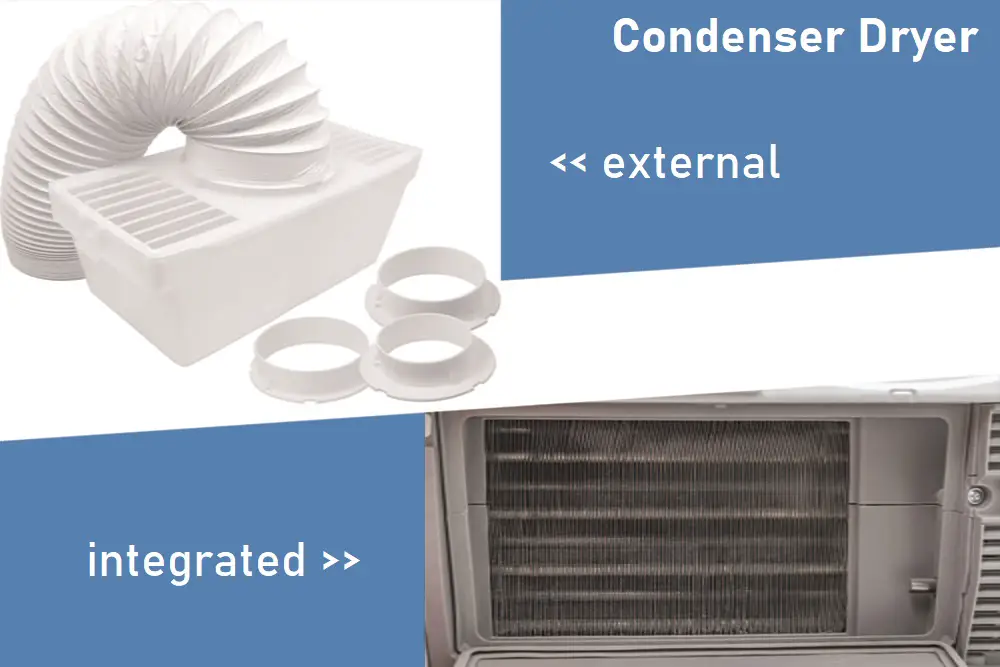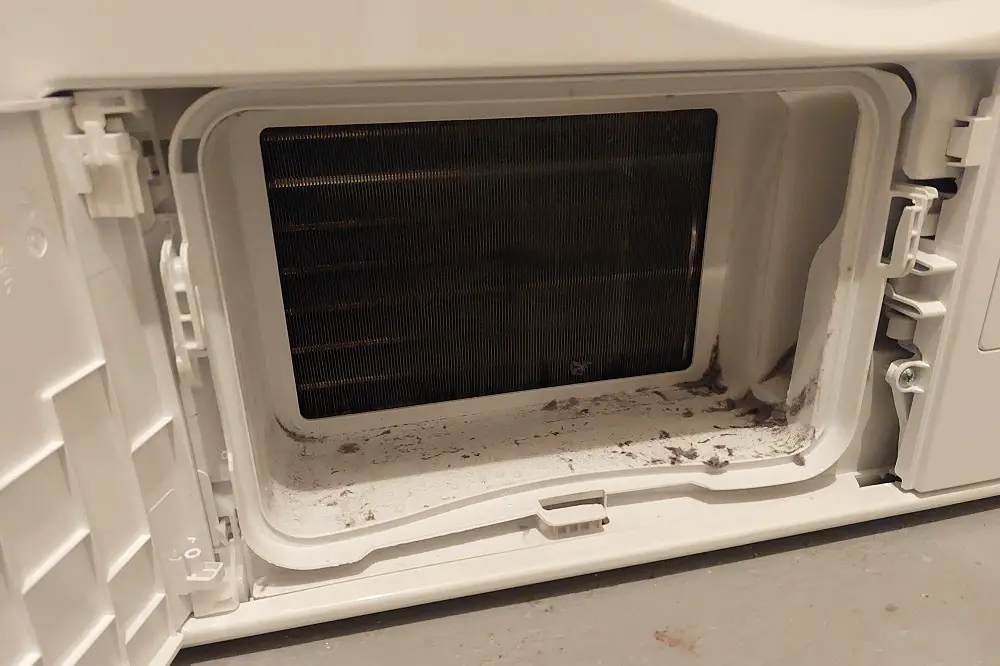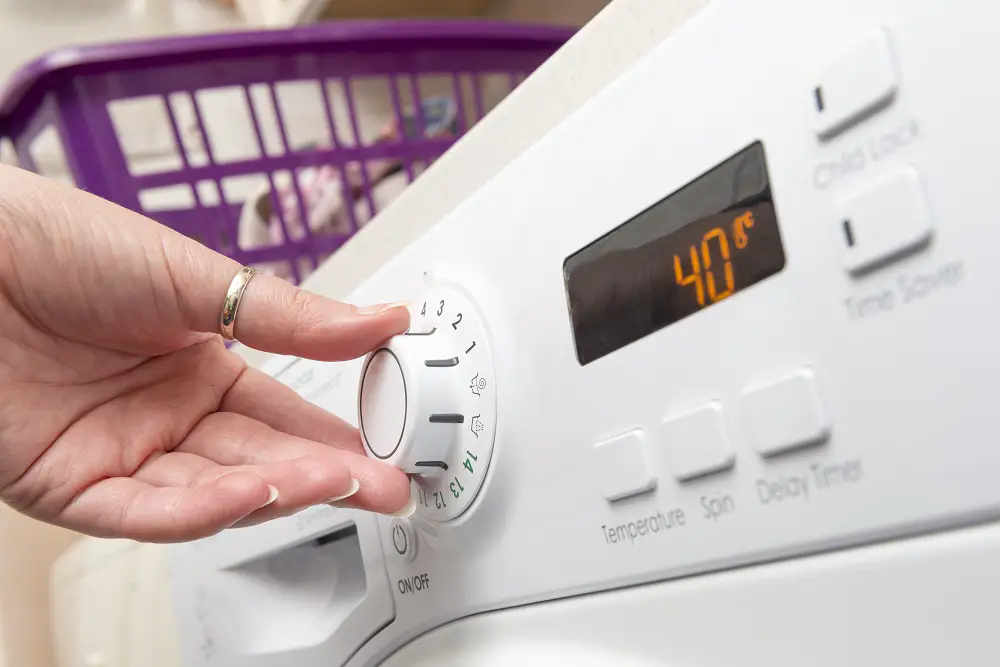It’s frustrating to dry your clothes and realize that your tumble dryer has a leaking defect.
Some of the most common causes of a leak in a tumble dryer are blockage in the dryer vent, a dysfunctional water collecting system, and a defective vent flap. Fortunately, these issues can be fixed manually at home. However, there might be larger problems as well that could only be fixed by a professional.
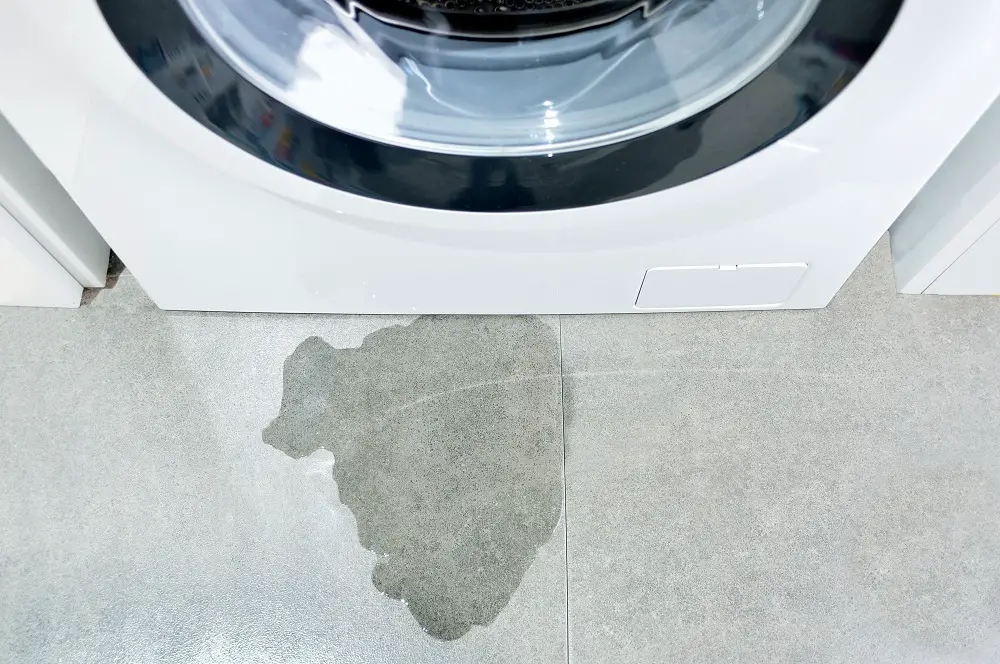
We have compiled a detailed list of reasons why your tumble dryer must be leaking along with how you can fix the problem.
Let’s get started!
Table of Contents
Reasons Why Your Tumble Dry Is Leaking Water
#1 Blockage in Dryer’s Exhaust Hose
The air coming through the tumble dryer is first heated by the machine and then distributed around your clothes to dry them.
If there is a blockage in your dryer, it will not be able to vent and distribute the moist and hot air. As a result, water will start collecting in your dryer. And because of blocked ventilation, the water will start to leak out.
What To Do?
- Unplug the leaking dryer before starting to clean to avoid electric shock.
- Start by checking the exhaust hose and see if there’s any kink or bits of lint blocking the airflow.
- To clear the blockage, take out the vent hose from the dryer and clean it using a dryer vent cleaning kit.
- If you are unable to get your hands on the kit, a vacuum extension can also be used.
- Once you are done cleaning your vent hose, make sure it doesn’t have any twists or bends that could stop the air from going through.
- After checking, you can put your vent hose back into the dryer.
Note: To avoid vent blockage in your tumble dryer, get your ventilation system and lint filter cleaned regularly (more details can be found here: How To Service A Tumble Dryer? (And How Often).
#2 No Insulation On Dryer Vent
Condensation in a dryer vent is a common problem with vented tumble dryers. The warm airflow coming out of the dryer should always be protected from outside weather conditions, especially during cold temperatures.
If your dryer vent pipe is not insulated properly, the hot air coming out of the dryer will start to turn into water when it reaches the cold pipe. This will result in condensation and the water will start leaking from your machine.
What To Do?
- Get the whole length of your dryer vent pipe properly insulated.
- An insulated pipe will ensure that hot airflow coming from the dryer doesn’t go through any temperature changes.
#3 Defective Vent Flap
The vent flap on your tumble dryer is positioned at the exit point of the ventilation duct. It works as a barrier and keeps outside elements like leaves, rainwater, and dust from getting into the vent duct. The flap door automatically opens up to let out the dry air coming from the external vent duct.
When the tumble dryer starts to tumble your clothes in hot air, it produces small bits of fabric (lint). This lint gets along with the air and tries to come out of the ventilation flap.
If your dryer’s external vent is not cleaned properly, lint and other debris will start to accumulate inside it, not allowing the door flap to shut properly.
This way, the vent will stay open, letting the rainwater, ice, and other elements come into the dryer through the vent. As a result, the rainwater will start to form condensation in the pipe and water from underneath will start to leak out from the dryer.
What To Do?
- Start by checking if the door of your vent flap is closing tightly or not and if it’s kept open because of accumulated lint.
- If you see any lint inside your vent flap, clean it out using a wipe or a scraper.
- You can also buy lint traps to prevent lint from getting into the vent pipe. This will also maintain your dryer’s durability.
- If you find that your door is broken or damaged, replace it with a new one.
#4 Leakage in Condensation Water Collection System
When you start your tumble dryer to dry your wet clothes, the dryer’s water collection system collects excess water in a water collection tank aka condenser tank. This container is either positioned at the top or bottom of the machine.
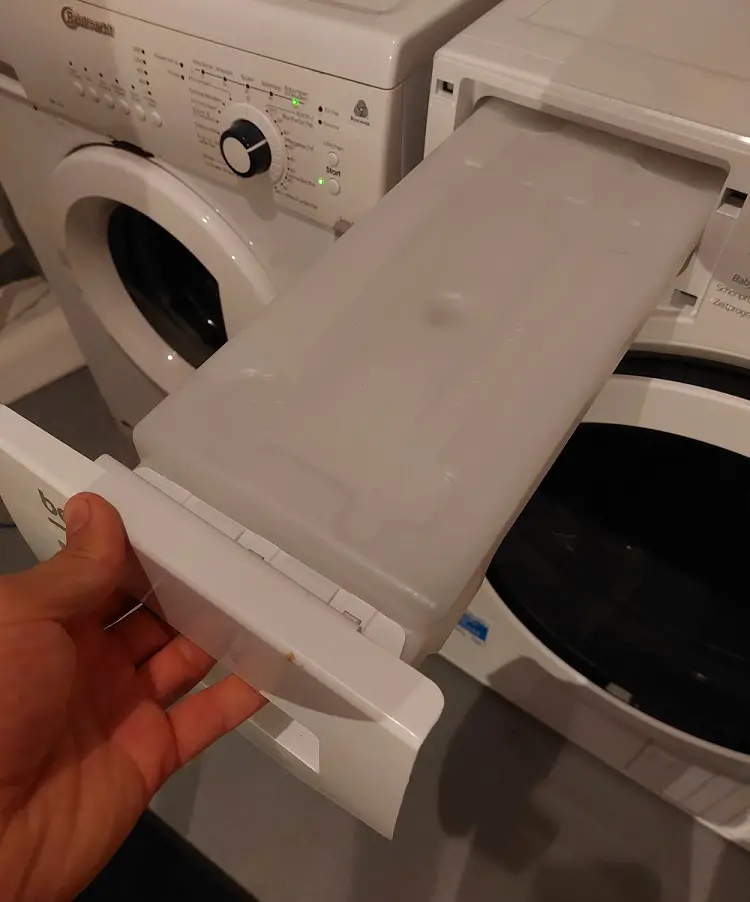
If the water container is already filled up to its capacity, then the extra water will start leaking onto the floor. A crack in your water collection tank could also be a reason behind the water leakage.
What To Do?
- If your condensate tank has a crack on it, the best solution is to replace it with a new one.
- Empty your water container if it is filled with water to stop the leakage.
- It is suggested to empty and clean your water tank after every use to avoid this issue.
#5 Holes in the Ventilation Duct
Every vented tumble dryer has a ventilation duct with a diameter of 4-inch. This duct takes out the water-laden air from its semi-rigid tube.
Any hole or crack in your ventilation duct could cause your tumble dryer to leak water from underneath. If the hole stays uncovered for long, small pests and dust can also get inside the vent system.
What To Do?
The best way to solve this issue is to seal your ventilation by applying a layer of cement on it, putting a small piece of cloth over the cemented area while it’s still wet, and applying a second layer of cement on top.
#6 Blockage In Condensate Pump
A condenser dryer uses a pump to move the excess water from the condenser into the water container tray that has to be emptied after every use. This condensate pump is situated behind a panel under the condenser tray.
If there will be any kind of blockage or defect in your pump, it won’t work correctly, and the water will start leaking out of the machine instead of moving toward the water container.
What To Do?
- Unplug the leaking dryer.
- Check the dryer pump and if you notice any kind of blockage, take the pump out and rinse it under running water.
- You might have to use a screwdriver to clean its parts thoroughly from the inside.
- If your pump is still not working after being cleaned, then there must be a functional defect in it.
- In this case, it is advised to get your pump replaced.
Note: If none of the above fixes are working for you, it is advised to contact a tumble dryer professional to check the leakage issue. This will not only save your energy and time but will also keep you from injuring yourself or making the issue worse.
Tips To Prevent Damage Due To Water Leakage
When it comes to water leakage, prevention is always better than cure. Here are a few tips that would help you get away with any kind of water damage that might happen in your house.
Floor Waterproofing
Water leakage from your washing machine or tumble dryer can cause water damage in your laundry room. To save yourself from all the mess, it is suggested to put waterproof flooring mats under your laundry appliances.
The rubber mat will help keep the mess in one place and will keep the water from getting into the subfloor. This is a must if you have pets or small kids at home.
Washer And Tumble Dryer Waterproofing
If you are concerned about water leakage with your washer or tumble dryer, put an extra rubber mat beneath them and watch out for indications of corrosion or other wear and tear if your machine is older.
The best way to prevent flooding is to fully replace your laundry appliances if you observe signs of water getting trapped inside them or any other major functionality issue.
Regular Maintenance
Carrying out regular maintenance checks on your laundry appliances is one of the best ways to prevent water leakage.
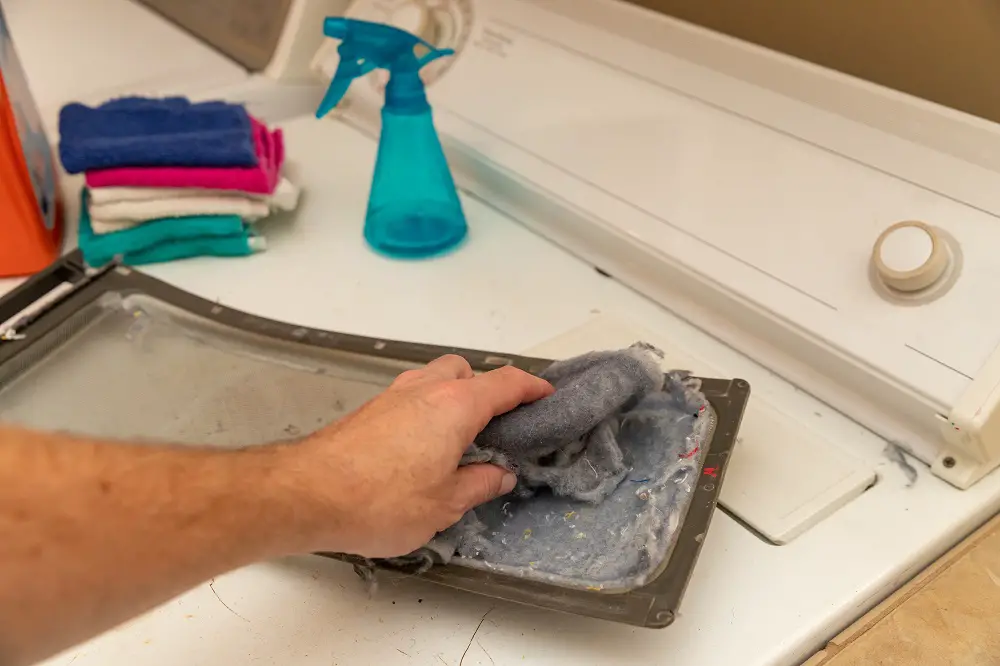
Make sure that all hoses and connections on your machines are securely fastened. Don’t forget to routinely clean your lint trap to avoid lint or debris buildup.
For more tips and a full guide on tumble dry servicing, check out our blog “How To Service A Tumble Dry? Read This”
To Put It All Together
If water leakage is not repaired immediately, it can create several issues. Check for the problem in your leaky dryer as soon as you inspect some water underneath.
Check the user manual of your manufacturer if you have any error codes displayed.
Waterproofing your washer and dryer, as well as maintaining floor mats and drip drying hoses are just a few basic things you can do to avoid costly damages. But if you find out the reason behind the water leak and fix it on your own, you can also prevent condensation and moisture issues.
